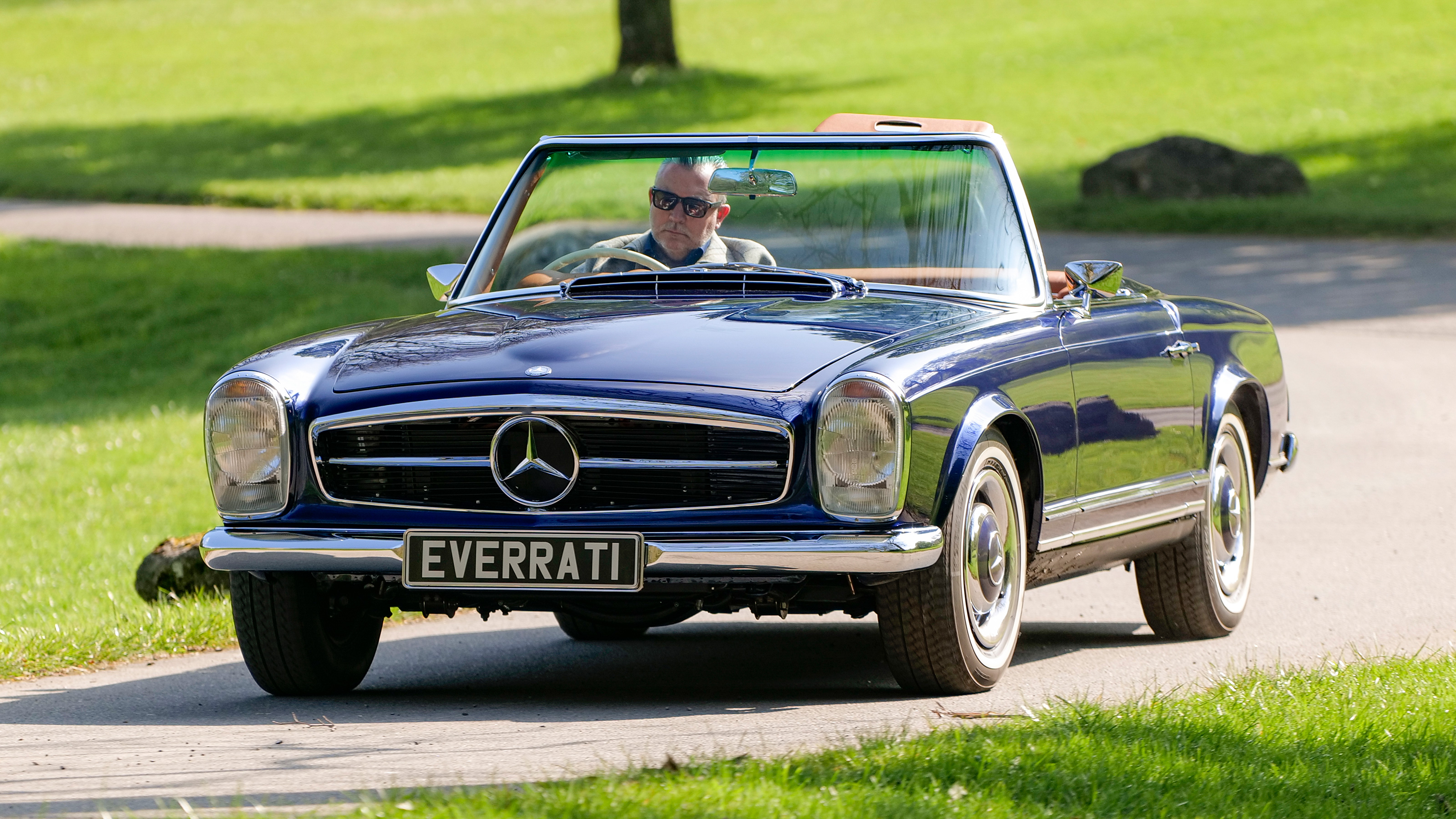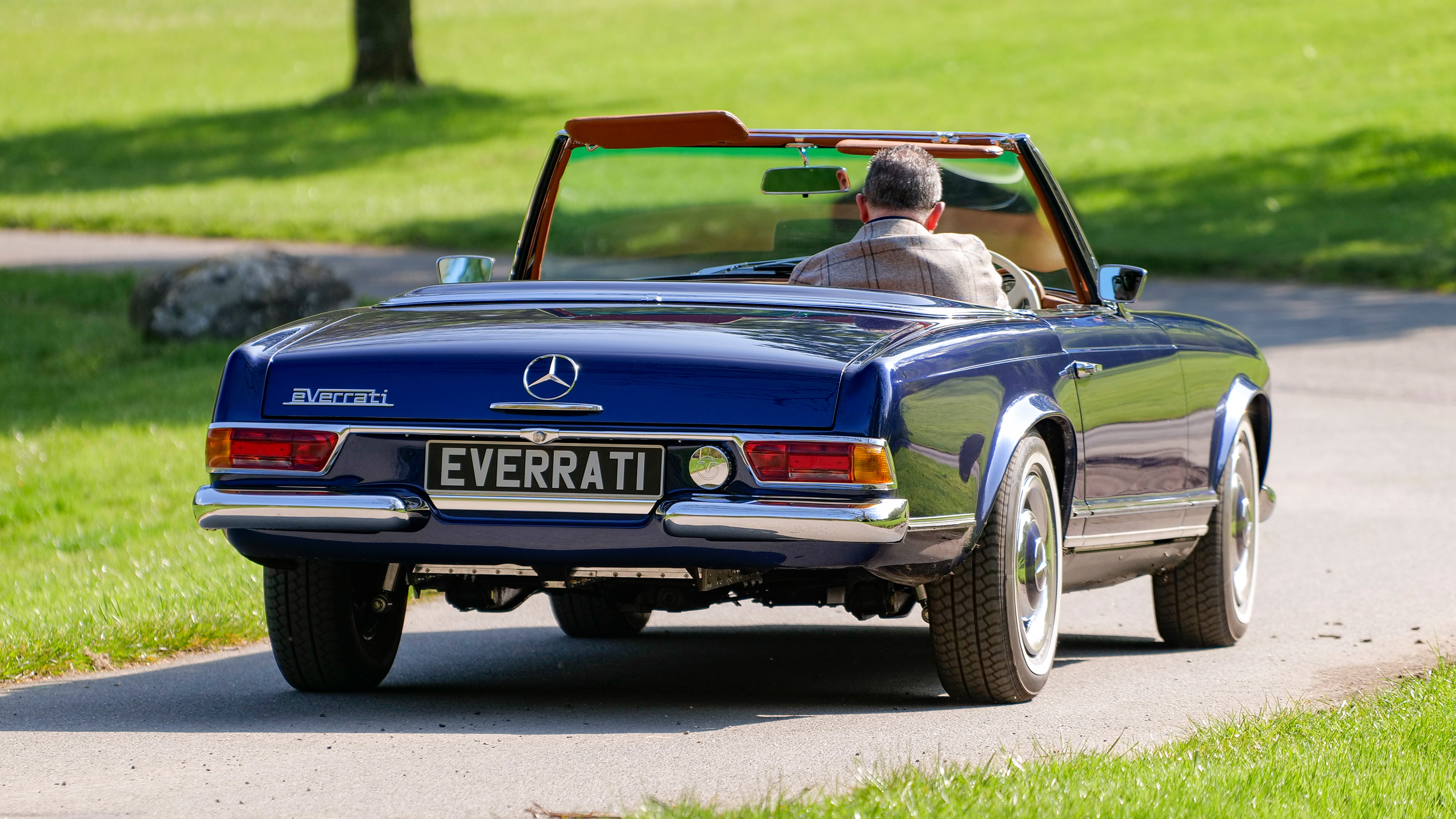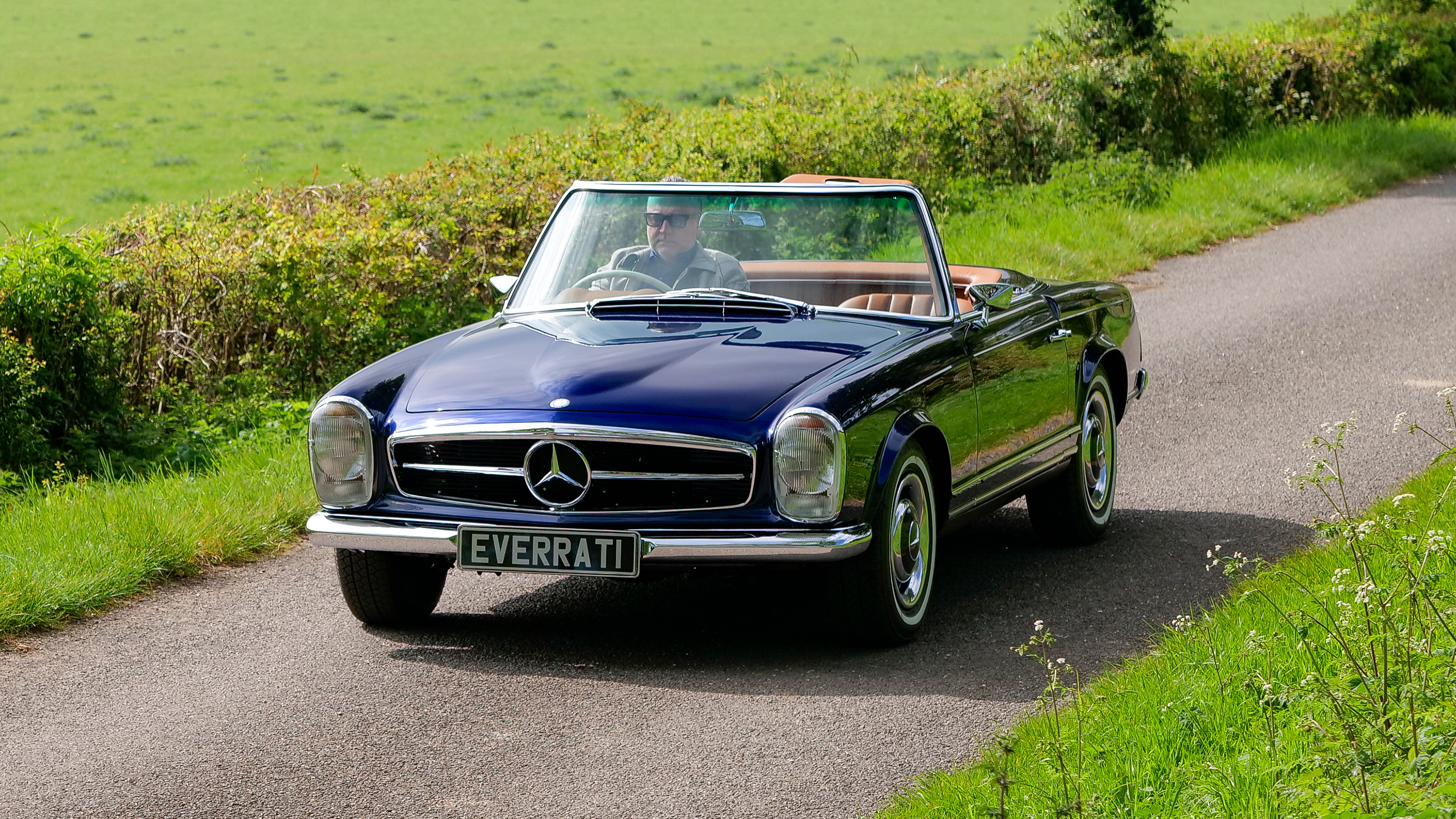
Mercedes-Benz SL Pagoda by Everrati review: Sixties W113… made electric
Gosh! Is this what TopGear.com would’ve looked like 60 years ago?
Probably. What you have here is a Mercedes-Benz 230 SL, the two-seater roadster that was revealed at the Geneva Motor Show in 1963 as a replacement for not one, but two SLs; the 190 (W121) and 300 (W198).
The brief was simple: be safe, and be fast. And so Merc borrowed the frame floor of the W111 series saloon and made it shorter and stronger, before adding - at the insistence of safety pioneer Bela Barenyi - a passenger safety cell with crumple zones up front and out back. At the time, those were firsts for a sports car.
As for speed, Mercedes took the in-line six of the 220 SE and upped its displacement to 2.3 litres, with a higher compression ratio and new cylinder head resulting in more power (148bhp), 0-62mph in 11.1 seconds and a top speed of 124mph. Missions accomplished.
When production began it was offered with a four-speed manual as standard, but a four-speed auto was optional. Front disc brakes worked with rear drums; it wasn’t until 1967’s 250 that Merc thought to just fit discs all round.
The SL’s timeless shape is the work of Paul Bracq, and the car gets its ‘Pagoda’ nickname from the hardtop roof, with those inward curves said to be reminiscent of those tiered towers you typically find in Asia.
Gorgeous. But… this isn’t that, is it?
Er, no. Forget almost everything you’ve just read, because what we have here is actually an SL that’s been fully resto’d and then retrofitted with - you guessed it - an electric powertrain. Cue the pantomime booing.
It’s the work of British firm Everrati, which has been with us for a few years now and has built up a small back catalogue that includes various 964s, the Land Rover Series and even a GT40. There’s plenty more on the way too.
Before you rush off and grab your pitchfork, bear in mind that Everrati’s ethos is - in the words of co-founder Justin Lunny - “about treating the car with respect”, so weight distribution akin to the original, and no excess power for the sake of it. Everrati’s turned down some proper rarified stuff recently (including an original 356, no less) because it wants to work with troublesome, unloved classics that will genuinely benefit from this kind of surgery.
What’ve they done to it?
Everrati has sourced what Lunny calls a “lowly” 230, but the restoration itself is the work of Benz specialists Hilton & Moss. Future Everrati SL interiors will be available with a range of hides supplied by Bridge of Weir (the ‘lowest carbon leather’ in the automotive world, is the claim), but this one’s been finished in keeping with the original.
Top Gear
Newsletter
Thank you for subscribing to our newsletter. Look out for your regular round-up of news, reviews and offers in your inbox.
Get all the latest news, reviews and exclusives, direct to your inbox.
Meanwhile, Everrati has conducted more than 4,000 hours of design and development work to figure out how to package the new parts. The ECU is its own work. The battery is split between the voids where the engine and fuel tank used to be, while the motor slots into the transmission tunnel. It’s added a limited slip diff, and although the brakes are still discs and drums they’re supplemented with a hint of regen, which can be fine-tuned to suit each individual buyer.
Like plenty of other resto-modded Mercs, Everrati’s creation runs KW suspension. The steering set-up is unchanged; UK law won’t allow it, you see.
Inside you get heated seats, but Everrati’s yet to fit the Bluetooth-controlled audio and aircon. But when finished it’ll be shipped off to its new home in Holland Park. Where else, right?
What’s performance like?
How would you react if I told you this had the same motor as those you’ll find in the 1,972bhp Lotus Evija and 1,139bhp Aston Martin Valkyrie? With horror, probably. But that’s what Everrati’s chosen, running a single motor from British firm Helix to power the rear wheels.
Capable of 400bhp, it’s the most power-dense motor on the planet apparently, but Everrati has tuned it down to a far more sensible 300bhp. Still double the original, then, and more than four seconds quicker to 62mph. Hmm.
The battery is a fifth-gen Envision cell, and you can have it in two sizes: 54.4kWh for 160 miles of range, or 68kWh for 200 miles as a ‘Touring’ model. AC and DC fast charging is standard.
What’s it like to drive?
From the clank of the door as you slide in, you’re aware that you’re driving an old timer. The steering wheel doesn’t adjust for reach, so you position the seat for your thighs, not your arms; the sun visor blocks most of the view ahead, unless it’s tilted skywards. Issues that have all been fixed in the last sixty years.
Turn the key and the Pagoda’s dash blinks into life, with a little digital readout separating the two analogue dials (notice how the right one reads kilowatts now). Refreshingly, no annoying switch-on jingle. They didn’t have those in 1963. The gear lever is now simply forwards for reverse and backwards for drive, bookending neutral. Tentatively, I pull it back, reach across to release the handbrake, and we’re off.
Immediately the lack of steering assistance makes manoeuvring the Pagoda busy work. Archimedes said he could move the world with a long enough lever: well, Mercedes solved the problem with a massive wheel.
But pick up some speed and the Pagoda starts to make sense. With no roof and no inline-six soundtrack, all you’re left with is acres of sky and Bracq’s clean body line falling away in the wing mirror. Glorious. This is a car for sunny days and putting smiles on faces. Including yours.
Ignore that it’s got 300bhp. There’s no gut punch like with some EVs, instead the car gathers speed with the urgency of a receptionist at a bad hotel. Happy with its own pace, completely unbothered by the world around it.
Getting rid of speed mind, that’s… an experience. Period-correct braking is all well and good, but when you need to slow pronto you’ll be alarmed at how hard you need to stamp on the pedal, and how ineffective it is when you do. Hate to say it, but maybe a modern servo wouldn’t be the worst thing? Now excuse me while I sign up for witness protection.
That’s about as much as I can say. And not because the Home Office is generating my new identity. My time in the car was limited to very low speeds on a dusty farm track, and half of that was spent behind a flock of sheep on their way to be sheared. No, really. A proper drive on actual roads will tell us much more when the car is fully signed off.
Tell me straight: it’s expensive, isn’t it?
Yes it is. The Pagoda costs… £330,000. Plus tax. So you’re looking at £400,000, then however much you need to fork out for the donor car. Yikes.
Everrati makes no bones about it: it’s targeting high net worth individuals, and so far it’s served clients in Vancouver, Washington, Santa Barbara, Palm Beach, Switzerland, the Netherlands, and more recently Dubai. Not places you’ll see much of in a Comic Relief appeal.
The EV surgery is completely reversible, but probably only to appease the keyboard warriors who think of this kind of thing as sacrilege. Surely no one with the cash is going to give two hoots about what the comments section says, nor think ‘Nah, change it back’ almost half a million sterling later.
No, if being electrified is what it takes to see more W113s out and about, and not broken down in some barn somewhere… so be it.
Featured

Trending this week
- Car Review
BMW iX3






